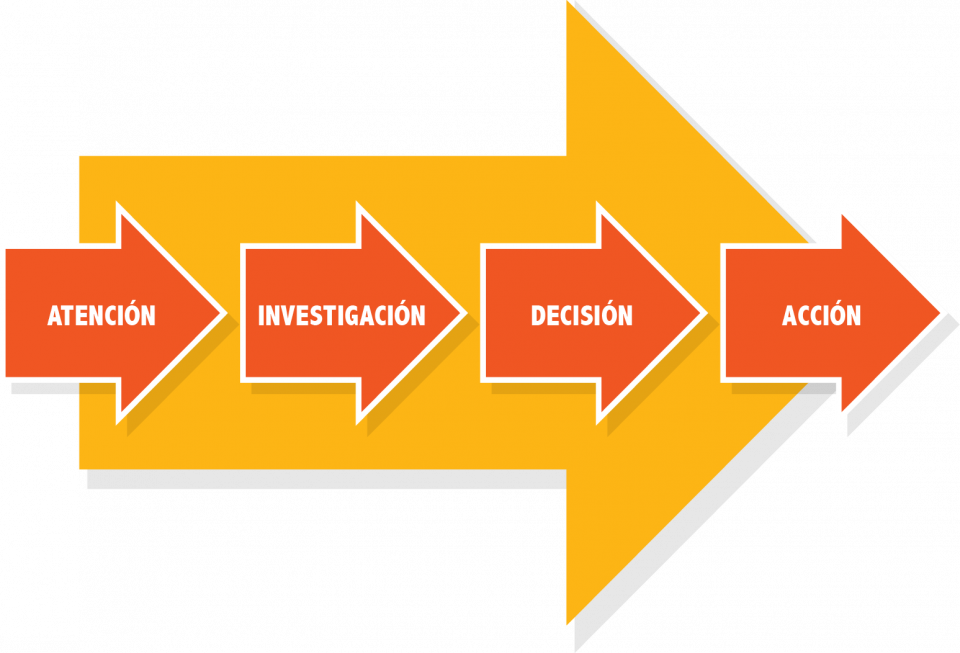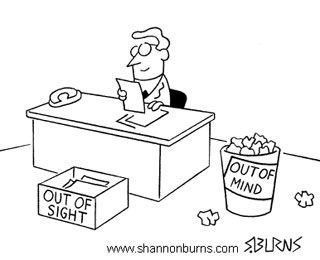In real estate, the customer's journey is a one-way trip
The customer journey is almost always a one-way trip, and as estate agents we must focus on getting our customers to recommend us, because repeat business is unlikely and beyond our reach.
In the last edition of AIC 17 | ENTER held in Calafell on 3 March, Monapart coordinated the morning block entirely dedicated to technology applied to the real estate sector. Of all the talks, presentations and interviews that took place, in my opinion it was that of Iban Solé (@IbanSole), an expert in digital sales, was the one who most emphasised how technology has changed the sales process, also in the real estate sector.
Our sector has the particularity of non-repetition on the part of the client in most cases (how many homes are sold in the sells a person in the course of his or her life?), which is why I assert that the client's journey is almost always a one-way journey, and as estate agents we must focus on getting our clients to recommend us, because repeat business is unlikely and beyond our reach.
The customer journey in real estate is almost always a one-way trip. How many homes does a person sell in a lifetime?
How have technologies affected this buying process in the real estate sector?
Among the various statements made by Iban Solé, I would like to highlight this one: "The information salesman is dead. The customer wants solutions, because information is in his pocket 24/7". This idea is also endorsed by Fernando Maciá (@fernandomacia) in Customer journey analysis and search scenarios: "Users prefer to shop in an environment where they feel they are making their own informed and free purchasing decisions. Online advertising is increasingly perceived as intrusive and when advertising comes through the door, users escape through the window." In short, technology has radically changed our relationship with brands and our buying process, and as consumers it has empowered us, making us the absolute masters (although technology also makes all of our behaviours tractable, and this big data is a huge asset for companies that know how to put it to good use, but this is a subject for another post...). I continue: We have all the information in our pockets, at all times, or we ask our circles on social networks about this or that product/service, or directly to the brands, of course we do (free rein to question Coca Cola because I got a can that had gone bad). We arrive at the shop knowing more about the product than the seller himself. We decide, give our opinion and share whether the experience has been satisfactory or a disaster. And be careful, because this negative message spreads like an oil stain, which is never removed because no one has yet invented virtual bleach.
This video is very illustrative of how the relationship between brands and consumers has changed:
Returning to the customer journey (the marketing term in English is customer journey), we see how the classic AIDA model, which divides the purchasing process into 4 phases (Attention, Research, Decision, Action), has become too small. People no longer buy products or services, but experiences. This key concept of experience is much more elastic, more spherical, more integral.
Therefore, If brands seek to build bonds with their customers by delivering satisfying experiences, this bond can be stretched over time and across multiple channels, and need not be tied to the lifetime of the service. That is why this new consumer journey includes the interaction phase and the final and definitive phase, the happy ending of the recommendation.

People no longer buy products or services, but experiences.
In the following, I go through each of the stages our client goes through in the buying process and ask some pertinent questions in our day-to-day work as estate agents:

AWARENESS: It is a truism, but in order to be known, we must first be seen. As the English say, Out of sight, out of mind. It used to be that brands would pitch their monologues to the masses and a TV advert was the most effective. For a millennial, that's only seen in an episode of the series Tell me about it... If our client is the owner-seller, it is essential that we know where he moves / buys / eats / dresses / takes the children to school / has a few drinks / goes on holiday, etc. in order to reach him, isn't it? The sign in the shop window announcing our services has fallen very, very short, because technology has extended our reach to infinity. Let's make the most of it! In short, if we want our potential customers to see us, we must be present in the channels they use.

CONSIDERATION: OK, we're on the right channel, but now we want to get the attention of that seller-owner. How can we do that with so many brands out there! In the past, they used to look for us in the Yellow Pages or by word of mouth, nowadays, they take their mobile phone out of their pocket and ask Google. Ok, we have a website, but the estate agent's website is not enoughHow do we feed it with content to attract you to our website? Do we give you information about your concerns? Do we answer your questions? What's more, let's take a step back, is our website ready to be viewed on mobile? Because if the answer is no, this is where we should start... And ok, we also have Facebook and even Twitter, but hey, we feed it just enough because I don't have time / I'm too lazy / I don't quite get the hang of it... So when that selling owner comes to our Facebook page (almost a miracle if we haven't paid anything...), sees that the last thing we published was a photo of a house for sale (obvious...), without text and a fortnight ago. What impression do we think he'll get? Hum. And if we do letterboxing, great! But we'd better be creative so that our flyer doesn't go straight into the bin with the pizza promos...

ACQUISITION: We are where we need to be, our potential customer has seen us and we have aroused their interest, and now... how do we give them that final push to make up their mind and choose us? Easy, by giving them reasons and explaining why we are their best option. Is our value proposition clear in our different channels? Do we explain well who we are, what we do, why we are different and better than our competitors? Do we share testimonials from our satisfied customers, do we give data that proves we know how to sell flats like no one else?
INTERACTION: I come back to the point I mentioned earlier, where I said that nowadays, the brand-consumer bond generated from the experience can (and should) be extended over time and through different channels, and does not have to be conditioned to the duration of the life of the service. There is no longer just one "moment of truth" with our potential customer, there are many, as many as he chooses. And we have to be prepared, because It is no longer enough to respond, it must be done quickly. (For more information on this aspect, I recommend this article The Short Life of Online Sales Leads published by Harvard Business Review in 2011). If someone calls us at the estate agency because they have a property to sell, do they have to listen to 3 symphonies before speaking to someone? How long does it take to answer emails asking for information about a flat, and do we return all calls? A study by Idealist conducted in 2014, concluded that 30% of estate agents never replied to emails requesting information. The 30%! On the other hand, we must offer multiple channels of contact. Having a phone and an email is no longer enough in today's multi-channel ecosystem. There are even trends that suggest that email is already a format that is gradually becoming obsolete. How many channels of contact do we offer our potential customers? Would we gamble our entire marketing budget by investing in just one channel?
It is no longer enough to respond, it must be done quickly.
RECOMMENDATION: I said it in my previous article on the real estate sector and digital transformation: satisfied customers are the best sales network. The real estate sector is a sector where we sell trust, we want people to speak well of us and word of mouth plays a fundamental role. What post-sales protocols do we deploy? Or is it that after signing before a notary, we say goodbye to our client and if I've seen you I don't remember? Do we send satisfaction surveys to our clients? Do we send them Christmas greetings? If we want them to remember us and therefore recommend us to their circles, we have to keep our memory alive in their minds. Even more so in the real estate sector, as (I repeat what was mentioned at the beginning of this article) the customer journey is almost always one-way, as repeat business is unlikely.

Hygienic vs. motivational factors. Final note.
The aspects dealt with for each of these phases of the buying process through which our target public -> potential client -> client -> recommender of our real estate services travels, are hygienic factorsThe ones that we must comply with in order to be able to, at the very least, face our competition. With a pass mark in hand, we will be able to address the motivational factors and go for a note by deploying appropriate tactics for each of the phases (displays, videos and content ads for the awareness-raising phase; emailing, retargeting y social ads for the consideration phase; SEO, SEM and social ads at the acquisition stage, etc.). On the basis of this Two-factor theory formulated by Frederick Herzbergpsychologist and professor at the University of Utah, I end this article with a final reflection: Responding to requests for information is nowadays a motivating factor, and that should make us professionals in the real estate sector feel good, in the same way that RENFE boasts about the punctuality of its trains... Do you know that saying about excusatio non petita, accusatio manifesta? That's right.


